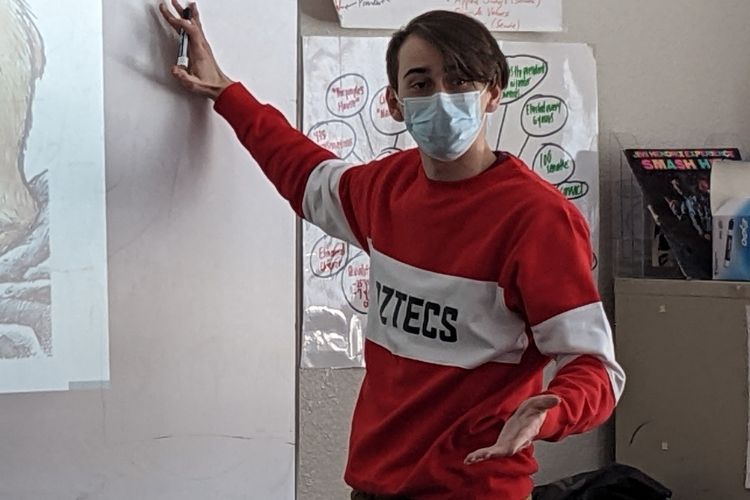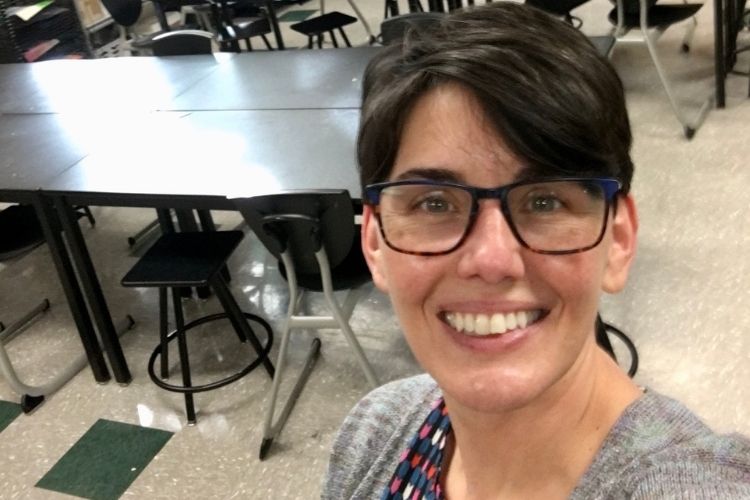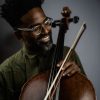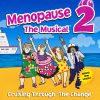Student-teaching is the final year of school for education students, and it’s filled with challenges and new experiences. How does a global pandemic factor in?
We spoke with three UMKC students who are student-teaching in greater Kansas City about how they’ve made the transition from student to teacher.
Where are you currently student teaching?
Lea Johnson: I am at East High School in the Kansas City Public School District (KCPS).
LeXaibriar (Xai) Brooks: I am currently student teaching in the KCPS School District at J.A. Rogers Elementary School.
Zane Green: I am student teaching in the Guadalupe Center Charter School, specifically the high school (GCHS).
Why did you decide to become a teacher?
Johnson: Our communities and students have complex cultural identities, which aren’t always served well. I want to develop the identities of my students and myself and work together to ensure that all young people receive the same quality of education, resources and opportunities so that they may pursue their dreams.
Brooks: I always knew I wanted to be a teacher. I was very active in church, and I would sometimes tutor. I was always helping someone write a paper or looking over their work. I liked being able to help and use my knowledge for something good. I also learned firsthand how one good teacher can change the course of a life, and that’s who I wanted to be.
Green: I will be a third-generation teacher. My mother taught home economics in Grandview and Parkville South. Her father, my grandfather, taught middle school math in a small town in Southwest Iowa. I would like to teach high school civics and speech and debate. I had an amazing civics teacher who was awesome and always did his best to make lessons fun; it was obvious that he cared deeply about his students and the topics.
What is your favorite subject to teach?
Johnson: I have always had an innate desire to create and express myself through art. It enables me to understand and make sense of the world around me, and I’ve always wanted to find a spot to help others empower themselves through creativity. Education is my landing spot. The classroom is a special place that can teach students essential life skills, but it is also a place for students to learn about themselves, others and the world. Art is the medium where I am able to guide students through these developmental processes, enabling them to overcome barriers that might have seemed too tall to scale.
Brooks: My favorite subject to teach is definitely reading. I believe that there is a lot of power behind words and if you learn to use them in the right way, you’ll never be unheard or misunderstood.
Green: Government. In the practicum program, I have observed and taught U.S. history, world history, and sociology, but government has been the most fun. Civics classes allow for discussion and activities that include resemblances of what you would see in a speech and debate club.

Zane Green
Did Covid affect your student-teaching plans?
Johnson: Not really, KCPS has been in-person the whole year, but my cooperating teacher and I have had to re-structure some of our lessons to accommodate Covid-related restrictions and to allot extra time for everyone to clean our art supplies and disinfect tables between classes.
Brooks: Covid actually did not interfere with any of the plans that I had for student teaching. When I started my student teaching in August, everything went exactly as my cooperating teacher and I planned. We did have to plan a little more as far as seating goes, or how far apart the students had to be, but that’s about it.
Green: Absolutely! Despite getting vaccinated back in March and April, I got COVID the weekend before GCHS started. I missed the first two weeks of student teaching. I was finally able to go in, and then the fourth week of school my cooperating teacher tested positive so I spent the week with a substitute teacher.
Covid has been hard on schools, especially the Omicron variant. How have you noticed it impacting your school community? You?
Johnson: Overall, the community, students, teachers and support staff, seem overwhelmed. For me, it has been hard to get the students re-focused once they come back to school after being sick or caring for family. I have also had to be flexible with my lesson planning to allow more time for my students to catch up on their missing work. But the many teacher absences due to Covid have actually given me opportunities to substitute teach for my cooperating teacher and cover other classes, giving me lots of valuable experience in classroom management and in developing positive relationships with more students.
Brooks: Omicron has definitely impacted our school community. There are kids being pulled out of class for testing left and right, and teachers are sick and out of the building, which is also hard for our school community because of the substitute teacher shortage. As for me, just making sure to be safe and aware of my health, while also doing the things I’m there to do, is another job within itself.
Green: The last few days before winter break, we were missing 25% of the student body. The week of MLK day, we had closures Tuesday and Wednesday because too many students and staff had tested positive. For myself, it’s just a sinking feeling when I see I am going to be missing a student for 5-10 days. It is extremely disheartening and I’m left wondering how I catch all these kids up.
What has been your favorite part of student-teaching so far?
Johnson: Working together alongside my students to imagine, investigate, construct and reflect on the creative process.
Brooks: THE KIDS! Definitely. They are a constant reminder of what teaching means and why I chose this for myself. Even though I’m the teacher, they teach me every day how to be better as not only a teacher but a person.
Green: When students “get it.” GCHS has a large population of English Language Learners, so whenever I find the right way to explain or word something to them it is very gratifying.

Lea Johnson
What is something that’s challenged you, or that you didn’t expect?
Johnson: It’s been challenging to keep students off their phones and focused on completing their work during class. I knew cell phone addiction was a real thing, but now I have seen firsthand the negative impact it is having on our students’ academic performance.
Brooks: Oddly, the thing that has challenged me and the thing that I didn’t expect is the same thing: the relationships I have with the students. I didn’t expect that the students would have such an impact on me in such a short time, or that I would love them far beyond the classroom. This is also a challenge because oftentimes it’s hard to separate my life from theirs. I find myself wondering if they’re eating on weekends, sleeping well, etc.
Green: The amount of time it takes to lesson plan, grade and prepare for class and how little time I have to do all of it. It’s all a part of the process and student-teaching is a full-time job, but it is hard to balance everything.
What’s one word you would use to describe your teaching style?
Johnson: Warm-demander. I have a nurturing personality and developing positive relationships with my students comes easily to me, but I also have high expectations for my students and push them to work hard and create something they are proud of.
Brooks: Free. I know that there are certain things that have to be taught and things that have to be done, but even with that there are ways to venture out and do things in a way that interests you and your students.
Green: Flexible. I do my best not to talk at the board for more than five minutes at a time if I am giving direct instruction. I prefer to have students learn independently, with a partner or a small group. Teenagers don’t really want to listen to me, but they might listen to their peers.







